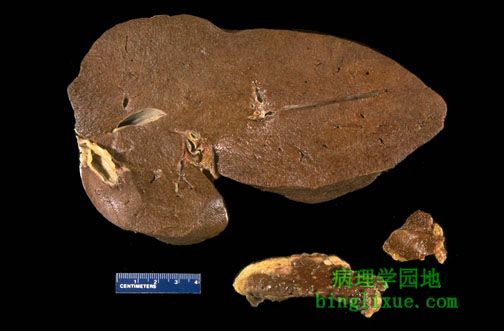
一例遗传性血色素沉着症(HHC),中年男性患者体内发生广泛的铁沉积,导致其肝脏、胰腺(下中图)和淋巴结(下右图)的切面均呈暗褐色。该病是由于血色素沉着症基因(HFE)突变使得肠吸收铁增加所致。美国约1/200-1/500病人发生。1/10的北欧血统的人携带正常的HFE隐性基因,而发病主要是C282Y突变。
The dark brown color of the liver, as well as the pancreas (bottom center) and lymph nodes (bottom right) on sectioning is due to extensive iron deposition in a middle-aged man with hereditary hemochromatosis (HHC). HHC results from a mutation involving the hemochromatosis gene (HFE) that leads to increased iron absorption from the gut. The prevalence is between 1:200 and 1:500 persons in the U.S. About 1 in 10 persons of northern European ancestry carries the abnormal recessive HFE gene, and most of these are the C282Y mutation.

